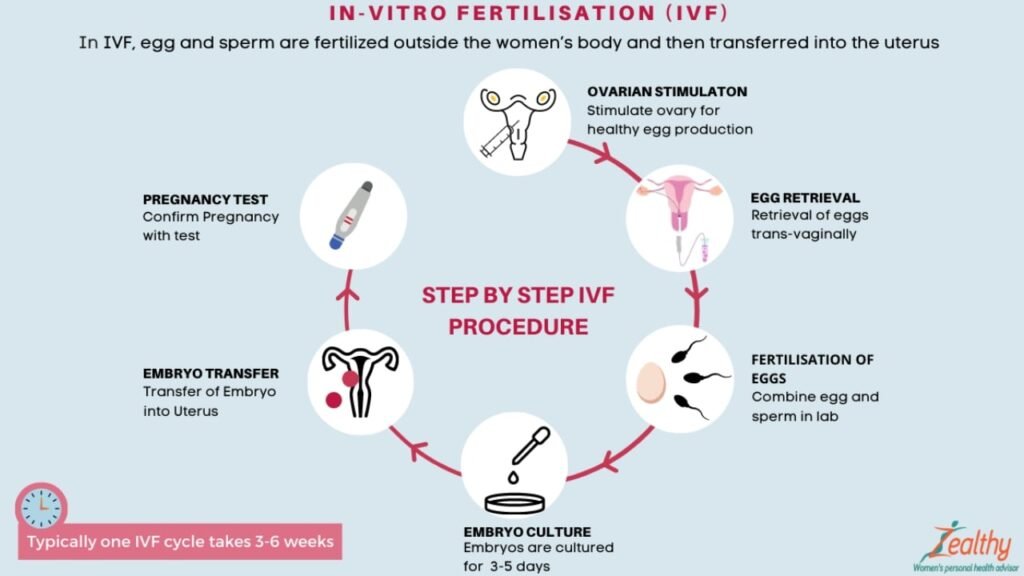
Table of Contents
Did you know that infertility is a public health issue in India?
But first, let’s define infertility. Simply put, it is when couples are unable to conceive after over a year of unprotected and regular intercourse.
The rising infertility rate in India impacts millions and recently, it has increased. The reason behind this upward trend ranges from socioeconomic to environmental factors.
Through this article, we will understand the prevalence of infertility in India, male and female infertility, and the solutions to this all-too-common problem.
The Prevalence of Infertility in India
As per the World Health Organization (WHO), infertility affects approximately 15% of couples across the world. In the last two decades alone, the prevalence of infertility in India has increased considerably.
Research suggests that the infertility rate in India is somewhere between 10% – 15%. What does this mean? Approximately, 15 out of every 100 couples find it difficult to conceive in our country.
But, what is the reason behind the rising cases of infertility in India? There are many factors, and sometimes a combination of these. It could be lifestyle preferences like smoking, obesity or poor diet. Other factors like delay in childbearing due to personal reasons are also linked to declining fertility.
Female Infertility Rate in India

In India, the female infertility rate has been increasing in recent years. The leading contributor is a condition known as the Polycystic Ovary Syndrome. Commonly known as PCOS, it affects hormone levels and ovulation.
PCOS is known to affect up to 20% of women in India. In addition to that, other medical conditions like endometriosis, tubal blockages, and uterine abnormalities also contribute to female infertility.
In a few cases, delayed marriages or postponement of childbearing have been identified as the cause behind higher female infertility rates in India. This is simply because, for women, the reproductive window reduces or narrows with age. Also, those over 35 years of age are at risk due to a decline in egg quality and quantity.
Research also states that in India, female infertility rates are higher in urban areas as compared to rural areas due to factors like stress and pollution. When it comes to reproductive health issues in rural areas, there are social stigmas surrounding infertility. This in turn makes it extremely difficult for women to seek proper medical treatment. Many are left to suffer in silence.
Other reasons like lack of awareness and knowledge, limited or no access to healthcare and medication, and unscientific beliefs about fertility prevent women from getting timely medical interventions. Naturally, then, all this leads to an increase in the female infertility rate in India.
Male Infertility Rate in India

Even today, many think that infertility is a women-only issue. The fact is men contribute equally to infertility cases. If you look at the numbers, it will be clear that male infertility contributes to almost 40% to 50% of all infertility cases in India.
Yet again, lifestyle choices like smoking and excessive consumption of alcohol are the reasons behind the increasing male infertility rate in India or poor sperm quality and low sperm count.
Varicocele, one of the common causes of male infertility, is a condition where the veins in the scrotum become enlarged. The impact is reduced production of sperm. Also, obesity can affect sperm health which is linked to reduced testosterone levels and in turn, poor sperm quality.
In addition to this, there are factors like hormonal imbalances and exposure to environmental toxins that increase male infertility rate. Unsurprisingly, in India, there is a marked lack of knowledge about male infertility.
This disastrous effect is twofold. First, women are emotionally distressed. Second, it delays or deprives men of proper diagnosis and treatment. Men must be encouraged to seek appropriate medical attention when necessary. So, efforts are required to raise awareness about male infertility and rid it of any stigma.
Factors Contributing to the Infertility Rate in India

Now, let us look at the factors that contribute to the increasing infertility rate in India. While it includes both lifestyle-related and biological causes, these are some of the primary contributors:
- Lifestyle Choices: We are all guilty of this. A sedentary lifestyle, unhealthy habits like smoking, excessive alcohol consumption, and nutrient deficient diet adversely affect fertility. For both men and women, obesity is a common culprit. Studies have proven that obese men can experience reduced sperm quality and mobility. As for women who are overweight, the chances of irregular ovulation are higher.
- Delayed Marriages: In India, particularly in the urban areas, people delay marriages for various reasons. Inevitably, childbearing also gets delayed. Hence, many women face a higher risk of infertility as fertility naturally declines with age.
- Environmental Factors: Pollution and other environmental toxins are linked to infertility. Reproductive health is affected particularly in urban areas where exposure to harmful chemicals, pesticides, and industrial pollutants is noted. Research has shown that air pollution may be linked to conditions such as endometriosis in women and negatively impact sperm quality in men.
- Medical Conditions: Infertility is impacted by medical conditions like diabetes, thyroid disorders, and autoimmune diseases. This is why maintaining overall health and a proper diet is crucial. Also, sexually transmitted infections (STIs) can cause damage to the reproductive organs in both men and women.
- Psychological Stress: The ability to conceive is further impacted by the high levels of stress, anxiety, and depression couples experience while struggling with infertility. Conversely, infertility-related stress can exacerbate the condition itself.
Addressing the Infertility Issue in India

It is important to take steps at both the individual and national levels to address and tackle the issue of the rising infertility rate in India. Let us look at some steps:
- Many couples are unaware that certain lifestyle choices are negatively affecting their fertility and delaying childbearing. Hence, there is an urgent need to make them aware of infertility and its causes.
- Public health campaigns with a focus on educating people about reproductive health can play a big part in over time reducing the incidences of infertility.
- It is important to improve access to fertility treatments, particularly for low-income families. Government initiatives such as financial assistance schemes or subsidies for in vitro fertilization (IVF) can make fertility treatments a reality for people.
- In Indian society, taboos surrounding infertility can instil shame, prevent couples from seeking medical help, and lead to preventable delays in treatment. Hence, it is imperative to destigmatize infertility.
- At the very least, we can encourage discussions about infertility to promote a safe environment and help relieve the emotional burden of the impacted couples.
Note: If you or a loved one are struggling with infertility, please consult a doctor. Google search cannot substitute medical knowledge.
Conclusion
The rising infertility rate in India is not just a private matter to be discussed behind closed doors. Due to increasing cases, in both urban and rural areas, infertility is a challenge for individuals, families, and the country’s healthcare system.
India, a country with a huge population has many couples struggling with the infertility issue. Both female and male infertility rates are on the rise. Hence, it is necessary to understand the root cause and help tackle the issue through spreading awareness, lifestyle changes, and improving access to medical care.
By taking a proactive approach to reproductive health, we can focus on reducing the prevalence of infertility and supporting couples in their parenthood journey.
Recommended Articles
If you found this topic interesting, you might also enjoy reading these articles:
Men’s Mental Health Month: Spotlight on Stigma in India


